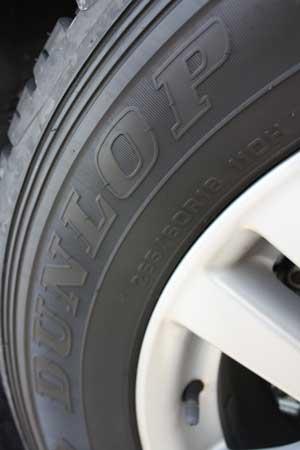It will come as no surprise to you that tyres are the single easiest and most cost-effective way to quickly improve your 4WD’s off-road ability, simply because they are the one thing that dictates how much traction you will have with the ground beneath you.
While price tends to be the deciding factor for most of us when the time comes to replace our tyres, looks count for a lot too, especially the chunky “proper” off-road tyres that will give your 4WD a tough, rugged look.
But in reality, these are the last two things we should be worrying about when choosing new tyres – your primary consideration should always be what you will actually be using the tyres for and, most importantly, safety.
The first step in choosing the right tyres for your 4WD involves one particular hard truth to be faced – how much off-road driving do you actually do?
If you spend more time on the road than off it, clearly a full-on mud tyre is utterly inappropriate.
While big, chunky mud tyres may look great and are the only choice if your 4WD is a dedicated off-road only vehicle, or you spend the vast majority of the time in it off the road, if you are using your vehicle as a daily commuter on the road, then they are totally wrong for you. In fact, M/T (Mud-Terrain) tyres often offer even less grip on the tarmac than badly worn normal road tyres.
The chunky tread means there is actually less rubber gripping the road than a normal road tyre would have, reducing the amount of grip available. This is especially dangerous in the wet for obvious reasons, with the added bulk and high centre of gravity of your average 4WD making the situation even worse.
Mud tyres also tend to wear quicker than an all-terrain or a street tyre, and depending on your perspective, the on-road noise level can be undesirable as it is typically considerably higher, especially after they wear down.
For these reasons, most tyre manufacturers don’t recommend the fitment of M/T tyres unless you are spending at least 80 percent of your time off the road.
In this situation, A/Ts or All-Terrain tyres are your best bet. The big advantage of all-terrain tyres is that they perform well on a wide variety of terrain – rocks, sand and light mud situations – while still offering a far higher level of grip on the road than M/Ts.
One of their drawbacks, however, is that the tread design tends to pack with mud easily, rendering them less effective off the road; that said, some A/T designs perform surprisingly well in muddy conditions.
A/T tyres are typically suitable for the driver who uses the 4WD as a daily driver, but still ventures off the road regularly, with manufacturers recommending a split of 60 percent on-road/40 percent off-road use.
Then there are Highway Tyres, or H/T tyres, which have even more of an on-road bias than A/Ts, with an 80 percent on-road/20 percent off-road recommendation from manufacturers.
With a far more road-biased tread pattern, H/T tyres offer far superior grip on the tarmac, especially in the wet. Generally you would only expect to fit H/T tyres if you were spending minimal time off the road, in relatively unchallenging conditions.
While it can be daunting to select the right tyres for your 4WD – especially if you are new to off-roading – spending a small amount of time thinking about exactly what you will be using your tyres for and considering the above descriptions will pay off in the long run.
If you are still in doubt, then asking advice from experienced off-roaders, 4WD clubs and your local tyre retailer is invaluable.
What the law says
Tyres are also, rather obviously, subject to various legal requirements in respect to their condition. Here is a brief run-down of the critical points:
• Tyres must have a tread depth of at least 1.5mm across the central three-quarters of the breadth of tread – the part of the tyre in contact with the road surface under normal circumstances – and in a continuous band around the entire circumference.
• Tyres must be suitable (i.e. of the correct type and size) for the use of the vehicle, and must be inflated to the vehicle or tyre manufacturer’s recommended pressures.
• Tyres of different construction must not be fitted to opposite wheels of the vehicle. For example, radial-ply tyres cannot be fitted to a wheel on the same axle as wheels fitted with cross-ply tyres and vice versa.
• If a vehicle is fitted with winter or snow tyres, they must be fitted to all wheels. This follows a number of accidents where vehicles were fitted with a mix of normal and snow tyres. It is now illegal to mix winter tyres with summer tyres, even in matched pairs on each axle.
Winter tyres are made with a softer rubber compound and deeper treads, specifically designed to maintain grip in cold weather (below 7deg C), ice and snow.
They can be distinguished by their deep square-patterned tread blocks. Some of them are marked by a mountain and snowflake symbol or the word “studless”, while others are called M&S.
If you’re not regularly driving in winter conditions (on snow and ice, in temperatures below 7degC), you don’t need winter tyres. If you do fit them, they need a deeper tread depth, i.e. 4mm minimum.
• Tyres must not have a break in the fabric or a cut deep enough to reach the body cords. No cut can be more than 25mm or 10 percent of the tyre’s section width in length, whichever is greater.
• There must be no lump, bulge or tear caused by separation or partial fracture of the tyre’s structure, neither can any part of the ply or cord structure be exposed.




